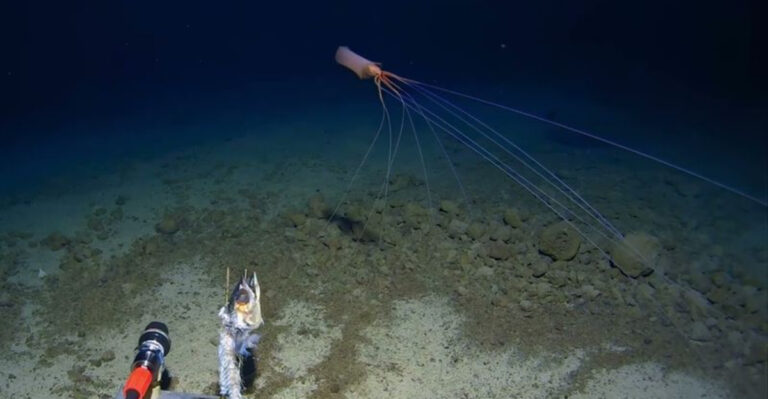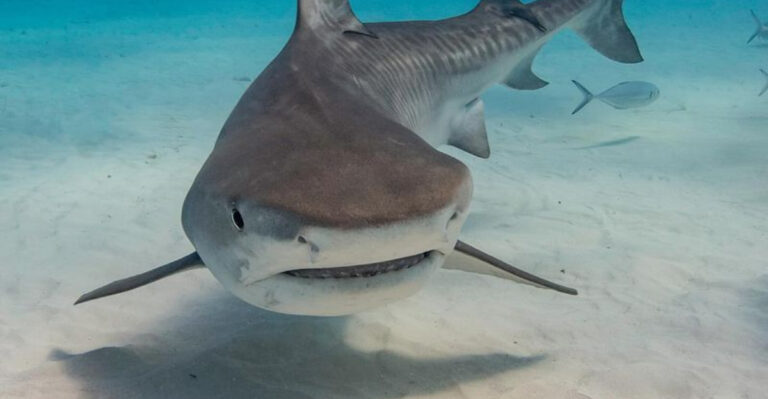Why The Mojave Rattlesnake Is The Most Dangerous Snake In North America

Hidden among the sun-baked rocks of the southwestern deserts lurks North America’s most fearsome serpent – the Mojave Rattlesnake.
This deadly reptile has earned its reputation through a combination of potent venom, aggressive behavior, and specialized hunting abilities. While all rattlesnakes deserve respect, the Mojave stands apart as particularly dangerous to humans who venture into its territory.
1. Neurotoxic Venom That Paralyzes

Unlike most rattlesnakes that possess hemotoxic venom (destroying tissue), the Mojave rattlesnake packs a neurotoxic punch that attacks the nervous system. This specialized venom shuts down communication between nerves and muscles.
Victims experience progressive paralysis that can stop breathing if left untreated. The paralysis often starts with facial muscles before spreading throughout the body. What makes this especially treacherous is how it differs from what people expect from a rattlesnake bite.
Medical professionals unfamiliar with this snake might not recognize the symptoms immediately, delaying crucial treatment.
2. Delayed Symptoms Trick Victims
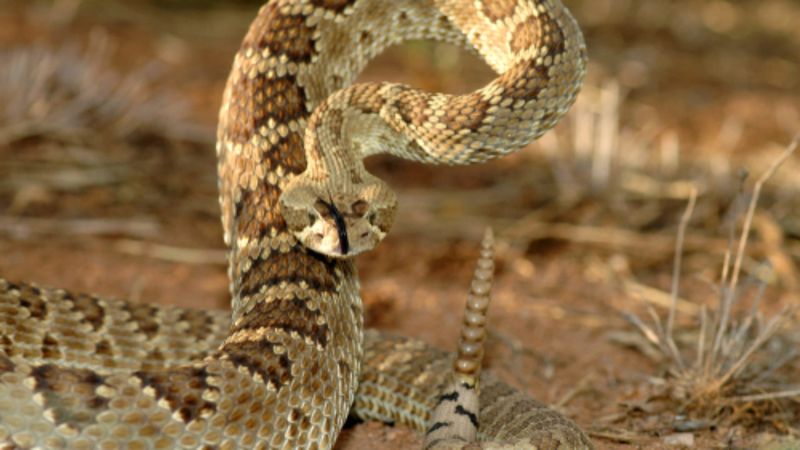
One of the Mojave’s most dangerous traits is how its venom can take hours to produce noticeable symptoms. Bite victims sometimes believe they’ve escaped serious injury when minimal pain or swelling appears initially.
This false sense of security leads people to delay seeking medical help. By the time severe symptoms develop – difficulty breathing, vision problems, slurred speech – the venom has already circulated throughout the body.
Emergency treatment becomes more complicated and less effective with each passing hour. This time-delay factor has contributed to numerous preventable deaths in the American Southwest.
3. Record-Breaking Venom Potency
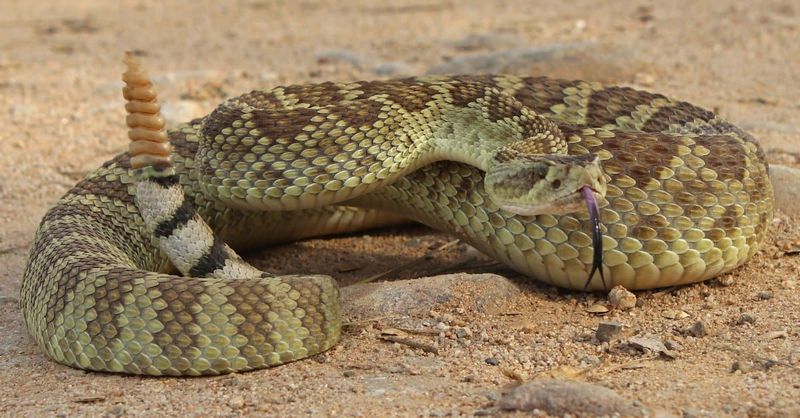
Scientists measure snake venom potency using LD50 tests – determining how much venom kills 50% of test subjects. The Mojave rattlesnake consistently ranks at the top of North American snakes in these tests, with venom approximately 10 times more potent than many other rattlesnake species.
Just a tiny amount can prove fatal without treatment. A full envenomation from an adult Mojave delivers enough toxin to kill several adult humans.
Even more alarming, individual Mojaves show significant variation in venom potency – some populations possess even stronger neurotoxins than others, creating a deadly lottery for bite victims.
4. Lightning-Fast Strike Speed

The Mojave rattlesnake can launch its strike in less than a quarter of a second – faster than a human can blink. This remarkable speed makes avoiding a strike nearly impossible once the snake decides to attack.
High-speed cameras have captured these strikes, showing how the snake can accurately hit targets from a distance equal to about half its body length. Their precision targeting naturally aims for warmer body parts where blood vessels are closer to the surface.
Combine this speed with excellent camouflage, and you have a predator that gives victims virtually no reaction time to escape once detected.
5. Heat-Sensing Pit Organs
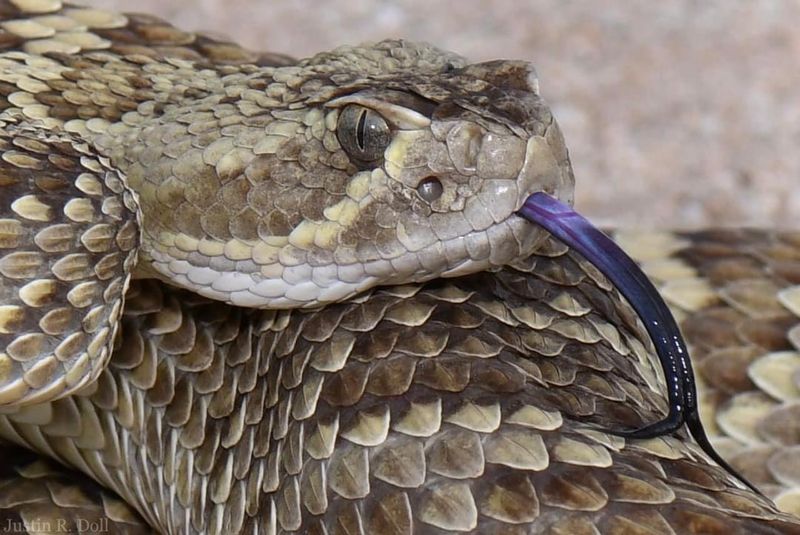
Equipped with specialized heat-detecting organs between their eyes and nostrils, Mojave rattlesnakes can literally see your body heat. These pit organs detect temperature differences as small as 0.003°C, creating a thermal image that works even in complete darkness.
This gives them a significant advantage when hunting or defending themselves. A Mojave can track a human’s movement precisely without relying on sight alone.
Even more concerning, these heat sensors allow them to target the warmest parts of your body – typically areas with major blood vessels. This increases the chance of venom entering the bloodstream quickly during a bite.
6. Aggressive Defensive Behavior

While most rattlesnakes prefer to retreat when encountering humans, Mojaves often stand their ground. Herpetologists who work with venomous snakes regularly cite the Mojave as among the most aggressive when cornered or threatened.
They’re known to advance toward perceived threats rather than slither away. This bold behavior increases the likelihood of human encounters turning dangerous.
Field researchers have documented cases where Mojaves pursued humans for short distances when they felt threatened. Their willingness to engage rather than escape means hikers and outdoor enthusiasts face greater risks in Mojave territory than in areas with other rattlesnake species.
7. Perfect Desert Camouflage
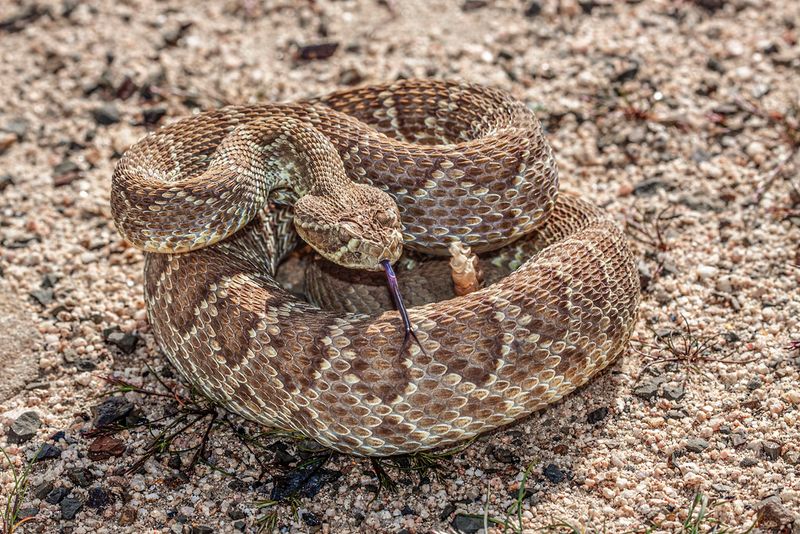
The Mojave’s light tan or greenish body blends seamlessly with the sandy, rocky landscapes it inhabits. Their color pattern varies by region to match local terrain, making them nearly invisible when motionless.
Hikers regularly pass within feet of these snakes without noticing them. This exceptional camouflage means people often don’t see the snake until they’re dangerously close – or worse, after they’ve already stepped near or on it.
The snake’s ability to remain perfectly still for hours adds to this camouflage advantage. Unlike many animals that fidget or move occasionally, a Mojave can maintain complete stillness while waiting for prey or avoiding detection.
8. Wide Geographic Range

Mojave rattlesnakes inhabit a vast territory spanning from central Mexico through Arizona, California, Nevada, New Mexico, and parts of Texas. This extensive range means millions of people live or recreate in areas where encounters are possible.
They thrive in diverse habitats including deserts, grasslands, and even suburban areas. As human development expands into their territory, encounters become increasingly common.
Unlike some dangerous animals confined to remote wilderness, Mojaves regularly appear near hiking trails, golf courses, and housing developments. Their adaptability to different environments and tolerance for human-altered landscapes puts them in frequent contact with people.
9. Specialized Antivenom Requirements

Standard rattlesnake antivenom doesn’t fully neutralize the Mojave’s unique neurotoxins. Victims require a specific antivenom called Crotalidae Polyvalent Immune Fab (CroFab) administered in higher doses than for other rattlesnake bites.
Rural hospitals in Mojave country sometimes lack sufficient quantities of this specialized treatment. This creates a dangerous situation where bite victims must be transported to larger medical facilities, losing precious time.
The cost is another factor – treatment can exceed $150,000. This financial burden sometimes causes people to delay seeking treatment, especially in communities with limited healthcare access or high uninsured populations.
10. Silent Attacks Without Warning
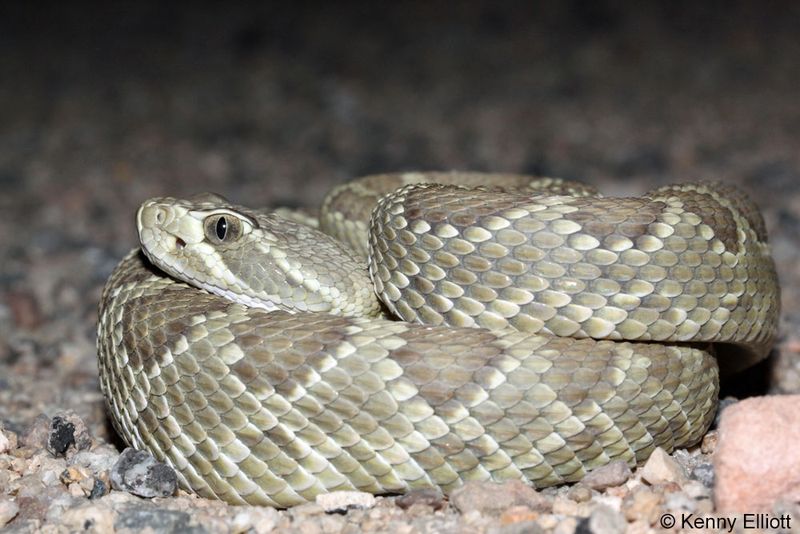
Contrary to popular belief, Mojave rattlesnakes don’t always rattle before striking. Research shows they frequently strike silently, especially when surprised or feeling cornered.
The evolutionary pressure from humans killing rattling snakes may have selected for quieter individuals. Young Mojaves are particularly prone to striking without acoustic warning.
This silent attack capability means the traditional warning system people rely on isn’t dependable. Hikers and outdoor enthusiasts can’t count on hearing the distinctive rattle before encountering danger. The absence of warning rattles has been documented in numerous bite cases, where victims reported never hearing the telltale sound before being struck.
11. Extreme Venom Yield Per Bite
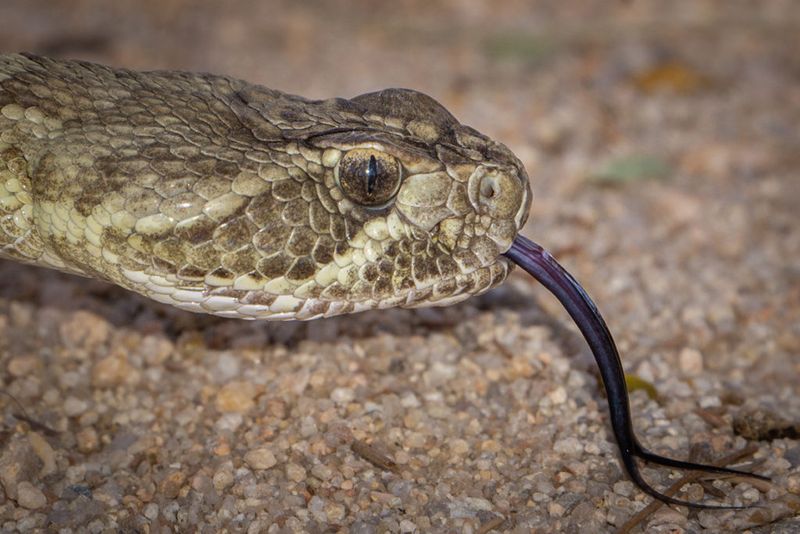
Adult Mojave rattlesnakes can deliver an astonishing amount of venom in a single bite – up to 50% of their venom reserves. This high-volume delivery system means victims receive a massive toxic dose even from a quick strike.
Their specialized fangs fold against the roof of the mouth when not in use and rotate forward during a strike. These hollow delivery needles can inject venom deep into tissue.
Even more concerning, Mojaves can control their venom output, choosing to deliver a full dose when they perceive a serious threat. This venom metering ability means defensive bites against humans often receive maximum venom injection.
12. Breeding Season Aggression Spikes
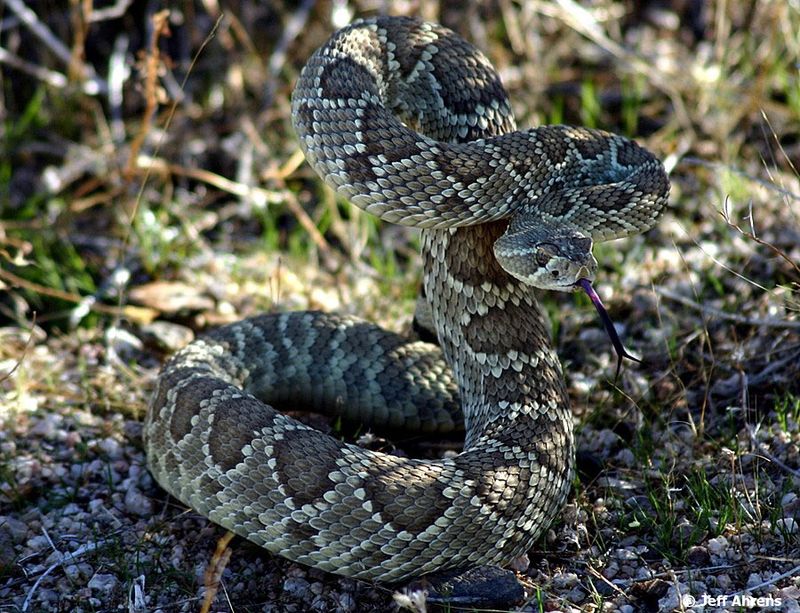
During spring mating season, male Mojaves become exceptionally territorial and aggressive. They travel widely seeking females and will stand their ground against much larger threats, including humans.
Hormone-driven behavior changes make them quicker to strike and less likely to retreat. This seasonal aggression coincides with peak hiking and outdoor recreation seasons in the Southwest.
Male Mojaves engage in combat dances during this period, intertwining their bodies and wrestling to establish dominance. Disturbing these ritualized battles can redirect their aggression toward human interlopers. Wildlife officials report a significant increase in snake encounters and bite incidents during these seasonal breeding periods.
13. Ability To Climb And Swim
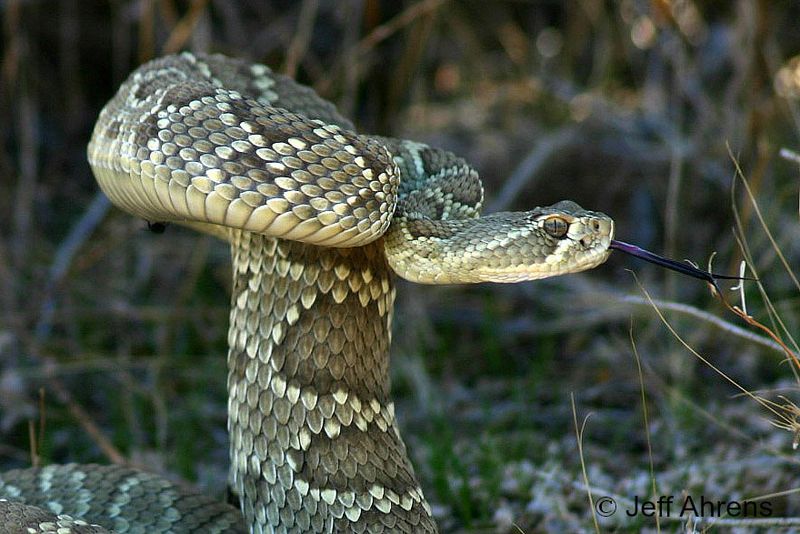
Unlike what many people assume, Mojave rattlesnakes are excellent climbers and swimmers. They’ve been documented ascending into low trees and bushes, especially when hunting birds or escaping floods.
Their swimming ability allows them to cross rivers and survive in temporary water bodies after desert rains. This mobility makes them unpredictable and able to access areas people might consider safe from snakes.
Campers have reported finding Mojaves in tents, vehicles, and equipment – places reached through climbing abilities that many don’t expect from rattlesnakes. Their versatile movement capabilities expand the potential encounter zones beyond the ground-level areas where most people watch for snakes.

